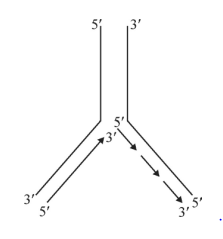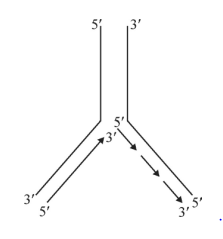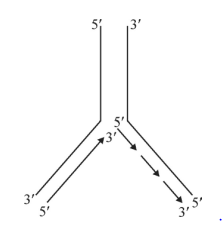MEDIUM
Earn 100
Why is DNA replication called semiconservative?
Important Questions on Molecular Basis of Inheritance
EASY
EASY
MEDIUM
MEDIUM

Identify the picture given in the picture.
EASY
MEDIUM

Identify the process in the picture and write the peculiarities of the newly synthesised daughter strands.
MEDIUM
HARD
HARD
HARD
MEDIUM

Name any two enzymes needed for this process.
MEDIUM
MEDIUM
The diagrammatic representation of the central dogma given below is not correct. Make necessary corrections and redraw it.

MEDIUM
Write the names of A, B and C in the following picture.

EASY
EASY
MEDIUM
MEDIUM
HARD
EASY

